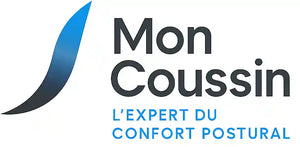Introduction: The Mysteries of Foraminal Stenosis Unveiled
Did you know that foraminal stenosis is a little-known condition that could affect your daily well-being? Often ignored until it becomes problematic, this condition can have significant impacts on the nervous system and spine . Understanding foraminal stenosis is essential not only for early diagnosis but also for effective preventative measures. This article aims to shed light on the surprising causes of this phenomenon and offer strategies to avoid it, while exploring the available treatment options.
Overview of key points
We will examine in detail the definition and mechanism of foraminal narrowing, its unexpected causes, methods of prevention, possible treatments, and conclude with practical recommendations.
Part 1: Understanding Foraminal Narrowing
What is Foraminal Stenosis?
Definition of foraminal narrowing
Foraminal stenosis refers to a narrowing of the openings (foramina) through which spinal nerves pass in the spine. This phenomenon can be caused by structural changes such as osteoarthritis, leading to nerve compression that can cause pain and numbness. According to a study by Modic et al., foraminal stenosis is a key factor in the generation of chronic spinal pain【4:0†source】.
Development mechanism
The development of foraminal narrowing is influenced by both biological and mechanical factors. Degenerative changes in bone and tissue can reduce the space within the neural canal , leading to nerve compression . White et al. explain that this compression can result from several factors, including natural aging and repetitive mechanical stresses【4:0†source】.
📌 To Remember:
- Foraminal stenosis is a narrowing of the nerve passages.
- It causes nerve compression resulting in pain.
- Both mechanical and biological factors contribute to its development.
Part 2: Surprising Causes of Foraminal Narrowing
Unexpected Causes to Consider
Lifestyles and daily habits
Sedentary lifestyle and poor posture are major contributors to foraminal narrowing. Lack of physical activity can exacerbate posture problems, increasing the risk of stenosis. A sedentary lifestyle can increase pressure on the intervertebral discs and foramina【4:0†source】.
Professional factors
Certain occupations put individuals at increased risk for foraminal stenosis . Jobs that require repetitive movements or heavy lifting can increase the risk of nerve compression 【4:0†source】.
Nutritional components
An unbalanced diet can also affect spinal health. A lack of essential nutrients can compromise bone density, while certain supplements can worsen degenerative conditions【4:0†source】.
📌 To Remember:
- Sedentary lifestyle and poor posture increase the risk.
- Jobs involving repetitive movements are at risk.
- Inadequate nutrition can affect spinal health.
Part 3: Prevention and Good Practices
Strategies to Avoid Foraminal Narrowing
Exercises and physical activities
Regularly incorporating appropriate exercises is crucial to maintaining spinal flexibility and strength. Activities such as yoga and Pilates are recommended to improve spinal health【4:0†source】.
Importance of ergonomics in everyday life
Adopting good ergonomic practices can prevent constriction. Proper workspace layout and proper lifting techniques are essential to reduce stress on the spine【4:0†source】.
Dietary adjustments
A healthy diet rich in vitamin D and calcium is beneficial for bone health. These nutrients are essential for preventing degenerative diseases【4:0†source】.
📌 To Remember:
- Regular exercise promotes flexibility and strength.
- Ergonomics reduces pressure on the spine.
- A diet rich in essential nutrients supports spinal health.
Part 4: Treatment Options and Therapies
Treating Foraminal Stenosis: Different Approaches
Non-invasive therapies
Non-invasive approaches such as physical therapy and chiropractic offer significant benefits. These methods can alleviate symptoms without resorting to surgery【4:0†source】.
Surgical options
In severe cases, surgery may be necessary to decompress the affected nerves. Types of procedures include foraminotomy and spinal fusion【4:0†source】.
Medications and pain management
Medications such as anti-inflammatories and pain relievers are often used to manage the pain associated with stricture【4:0†source】.
📌 To Remember:
- Non-invasive therapies are often sufficient.
- Surgery is reserved for severe cases.
- Pain management requires a holistic approach.
Conclusion: Navigating Towards a Healthier Back
In conclusion, foraminal stenosis is a complex condition influenced by various lifestyle and occupational factors. By adopting proactive measures such as regular exercise, good ergonomics, and a balanced diet, you can reduce your risk. For those already affected, various treatment options exist, ranging from non-invasive therapies to surgical interventions. Consult a healthcare professional for a personalized diagnosis and do not hesitate to share this article with your loved ones to raise awareness of the risks and possible solutions.
FAQ
-
What is foraminal narrowing?
Foraminal stenosis is a narrowing of the nerve passages in the spine. -
What lifestyle factors can contribute to foraminal narrowing?
A sedentary lifestyle, poor posture and an unbalanced diet can contribute to this condition. -
Can foraminal narrowing be reversed through lifestyle changes?
Yes, adjustments in exercise, ergonomics, and nutrition can help manage and prevent stenosis.
-
What are the signs that indicate possible foraminal narrowing?
Symptoms include pain, tingling or numbness in the limbs. -
What exercises are recommended for spinal health?
Yoga, Pilates and muscle strengthening exercises are beneficial. -
When is surgery necessary for foraminal stenosis?
Surgery is considered when symptoms are severe and do not respond to non-invasive treatments.





